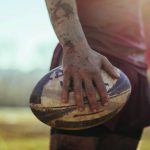Calls for sporting bodies to take concussion and head trauma more seriously may finally be heard in court.
If the medical evidence isn’t enough to convince major sporting codes to introduce changes limiting head trauma, the prospect of endless lawsuits from athletes who develop chronic traumatic encephalopathy may just do the trick.
CTE, a rare form of dementia that has been linked to receiving multiple concussive or sub-concussive blows to the head, is back in the spotlight as a Senate committee looks into the effects of concussions and head trauma in sports.
Earlier this week, Melbourne law firm Margalit Injury Lawyers indicated that it intended to move ahead with a class action which against the AFL.
It is understood that the lawsuit will seek to hold the AFL to account for failing in its duty as a sports regulator, and to show that it is liable for mismanagement of concussive injuries.
While no one has ever taken an Australian sporting organisation to court over CTE, there was a successful series of class actions in the US several years ago in which footballers won a $US1 billion settlement against the NFL.
There’s also an ongoing class action in the UK involving several Rugby codes.
In its submission to the Senate inquiry, Margalit Injury Lawyers alleged that the AFL has had knowledge of the risks of concussion dating back to the mid-1990s.
“Historically there has been a taboo against suing the AFL, which has perhaps been encouraged by the AFL, the clubs, and associated ‘tough bloke’ culture,” the submission read.
“We query whether, given the current climate, this culture is bound for change.”
To date, none of the peak Australian sports medicine bodies have officially acknowledged the link between sports-related head knocks and CTE.
In another submission to the inquiry, neurologist and Australian CTE Biobank director Dr Rowena Mobbs said she had 180 patients with suspected traumatic encephalopathy syndrome, the in-life syndrome of CTE.
Dr Mobbs estimates that her patients represent Australia’s largest clinical cohort of people with CTE symptoms.
Unlike other diseases where a tissue sample or imaging can prove the presence of a malignancy, there’s no way to conclusively diagnose CTE until after death.
The neurologist identified the lack of a concrete biomarker for CTE as a major hurdle to the disease being recognised more widely.
“CTE is predominantly a younger onset subtype of dementia, and many of my patients are in the prime of their life, aged in their 30s, 40s, 50s and 60s,” Dr Mobbs wrote.
“CTE may go undetected simply because medical practitioners or family do not suspect dementia in such a young individual or because of its very slow manifestation and occult nature.
“With traditional medical teaching that CTE is seen only in boxers, we as medical practitioners have been blinkered in our ability to diagnose it during life in other circumstances.”
Non-sporting circumstances to consider may include a history of previous assaults, domestic violence or military injuries.
Given that CTE patients typically have intact linguistic and social pathways, and therefore may appear outwardly normal, Dr Mobbs recommended neuropsychology testing, which she said had often been revealing.
Episodic memory impairments, among other temporal and frontal changes, have been a consistent early warning sign in Dr Mobbs’ patient cohort.
With no cure for dementia, Dr Mobbs typically manages patient symptoms with mood-stabilising agents or low dose antipsychotic therapy, as well as chronic migraine therapy for the 30% of her cohort with chronic migraines.
The RACGP, in its submission, argued for broad changes to the way contact sports are played.
“Widespread participation in sporting activities will only be achieved if the sports are made safe and also perceived to be safe,” the college said.
“The RACGP recommends strong approaches are taken by sporting bodies to prevent concussion and repeated head trauma for everyone playing contact sports in Australia.
“This includes suitably adapting the rules of their sports where required, in order to significantly reduce the likelihood of concussion and repeated head injuries.”
Where there is evidence, the RACGP added, there should be guidelines on post-concussion syndrome and suspected CTE which could be uploaded to HealthPathways.






